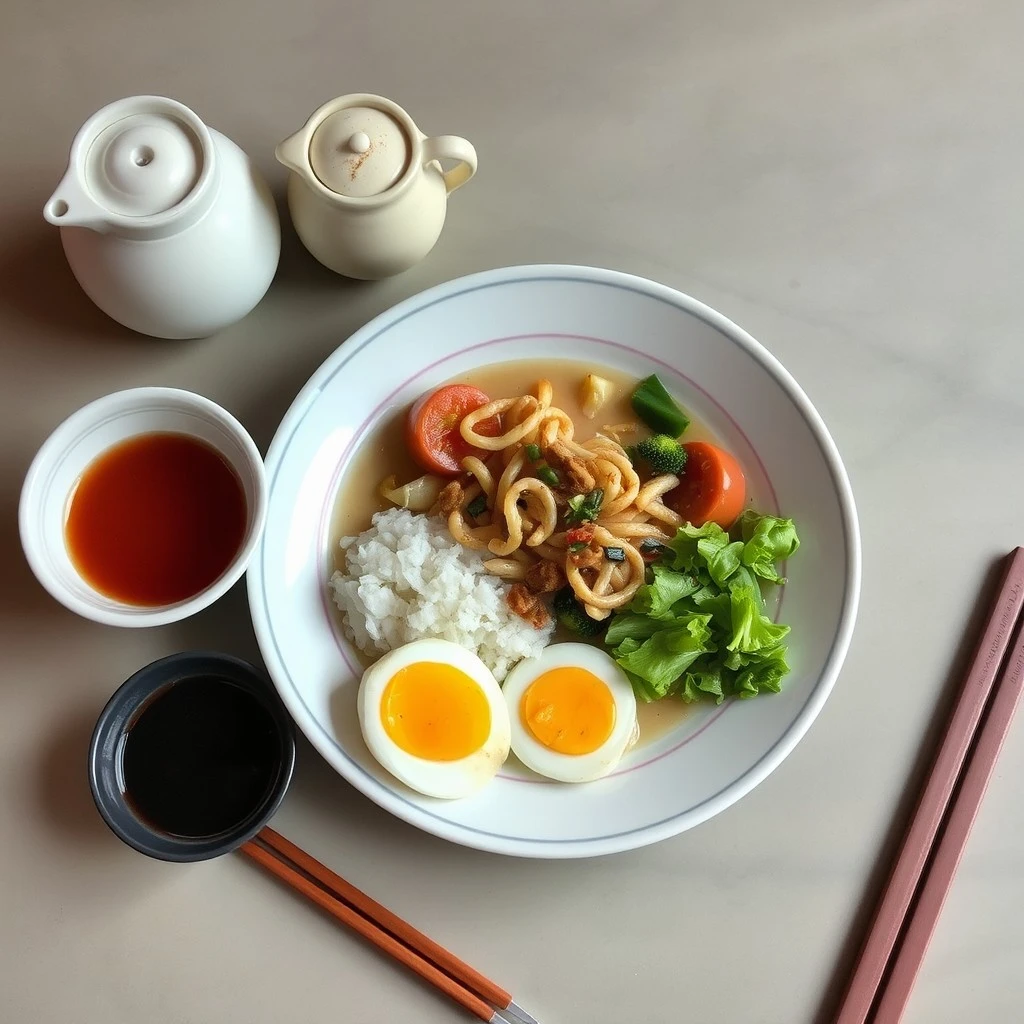Breakfast plays an important role in Chinese culture, just as it does in many other parts of the world. Chinese breakfasts are unique, reflecting the country’s long history, regional diversity, and culinary traditions. Unlike the typical quick breakfast of cereal or toast in Western countries, Chinese breakfast is often hearty, savory, and rich in flavor. The meal might include rice, noodles, dumplings, and steamed buns, depending on the region.
In China, breakfast serves more than just a functional purpose. It’s a moment to enjoy food, bond with family or friends, and set the tone for the day ahead. People gather at local markets or street food stalls, sharing their morning meal while connecting with the community. The variety and richness of Chinese breakfast dishes highlight the country’s cultural and culinary diversity.
Traditional Chinese Breakfast Foods
The diversity of traditional Chinese breakfast foods is unparalleled. Dishes like baozi (steamed buns filled with pork or sweet paste), jianbing (savory pancakes with herbs and crispy crackers), and congee (a rice porridge topped with eggs or vegetables) each offer unique textures and flavors.
In northern China, youtiao (fried dough sticks) with soy milk is a breakfast staple, while southern regions prefer rice-based options like congee and dim sum. Dive into tips for crafting your breakfast with a healthy twist.
Chinese Breakfast Beverages
Chinese breakfast beverages also have a unique flavor profile. Tea is a constant presence, but certain drinks specifically complement breakfast. Soy milk is a common choice and often served warm or cold, typically paired with youtiao.
Alongside soy milk, Chinese tea plays a key role. Green, oolong, and jasmine teas are all common options, and they provide a light and refreshing accompaniment to breakfast. Rice porridge, in some regions, also serves as a beverage, with people adding toppings like salted duck eggs and pickled vegetables for extra flavor.
Another popular beverage is black sesame soup, which is rich, creamy, and slightly sweet. It’s a comforting drink often enjoyed in the morning for both its flavor and its nutritional value.
Regional Breakfast Specialties
The vast geography of China influences breakfast preferences. In the north, hearty wheat-based foods like baozi and noodles dominate, while southern areas gravitate toward lighter, rice-based meals like congee.
Dim sum is particularly significant in Cantonese regions, providing bite-sized portions perfect for pairing with tea. In the spicy Sichuan province, breakfasts often feature bold flavors with hot noodles or soups.
For more on regional specialties, analyze this guide on global culinary influences.
Modern Chinese Breakfast Trends
While traditional Chinese breakfasts remain popular, modern influences have started to shape how people eat in the morning. In major cities like Beijing and Shanghai, convenience has become a priority, leading to quicker options. Vendors now offer fusion versions of traditional dishes, like jianbing with cheese or bacon.
Health-conscious eating has gained traction, with many opting for lighter breakfast options such as fruit bowls, smoothies, and oatmeal. People focus on whole grains, fresh fruits, and plant-based foods to start the day in a more health-focused way. Despite these modern trends, traditional breakfasts continue to be enjoyed, blending the old with the new.
Health Aspects of Chinese Breakfast
Chinese breakfasts often emphasize nourishment and balance. Many dishes feature ingredients known for their health benefits. Congee, for example, is easy to digest and is a popular choice for those seeking a light yet restorative meal. It’s considered a perfect food for improving digestion and boosting energy in the morning.
Breakfasts like baozi and dim sum provide a well-rounded mix of protein, carbohydrates, and healthy fats, keeping the body animate throughout the day. Drinks like soy milk and green tea also offer antioxidants and other health benefits, while ingredients like sesame seeds and ginger contribute additional nutritional value.
In China, people view breakfast as a way to begin the day with mindfulness, choosing foods that nourish both the body and the spirit.
How to Prepare a Traditional Chinese Breakfast at Home
Making a traditional Chinese breakfast at home can be both fun and rewarding. To begin, decide on the dishes you want to prepare. For a filling meal, baozi (steamed buns) are a great choice. You’ll need to prepare dough and fill it with ingredients like pork, vegetables, or sweet fillings. Steaming them with a bamboo steamer gives them a fluffy texture.
If you prefer a lighter dish, congee is an easy and comforting option. Simply cook rice with a larger proportion of water or broth until it reaches a smooth, porridge-like consistency. Top it with pickled vegetables, boiled eggs, or meats for a full breakfast.
Jianbing, a crispy Chinese pancake, is another great option. Spread the batter on a hot griddle, crack an egg over it, and add fillings like herbs and crispy crackers. After folding the pancake, you’ll have a satisfying and portable breakfast.
secure you have the right equipment, such as a bamboo steamer or a griddle, to help you achieve authentic results. Asian grocery stores will have the ingredients you need to make these dishes at home.
Exploring Street Food Breakfast in China
Street food plays an important role in Chinese breakfast culture. Early mornings in China are filled with the sound of vendors preparing breakfast dishes that attract locals and visitors alike. Some of the most popular items include jianbing, baozi, and youtiao, all served fresh and ready to eat.
For many, breakfast from a street food stall is essential. It offers a quick, affordable meal and an opportunity to interact with locals. The atmosphere around these stalls is lively, and enjoying breakfast there allows you to experience the local culture firsthand.
Street vendors often prepare food in front of customers, ensuring freshness and authenticity. Breakfast from these stalls represents the heart of Chinese culinary tradition, offering a taste of everyday life.
Common Misconceptions About Chinese Breakfast
Several misconceptions exist about Chinese breakfast that need to be addressed. One of the biggest is the belief that all Chinese breakfasts are sweet or dessert-like. In reality, the majority of Chinese breakfasts are savory, with a balance of carbohydrates, proteins, and vegetables.
Another misconception is that Chinese breakfasts are difficult or time-consuming to make. While some dishes, like baozi and dim sum, require more preparation, many breakfast foods, such as congee or youtiao, can be prepared in a short time.
Finally, some believe that Chinese breakfasts are bland or lack variety. This isn’t true at all. Chinese breakfasts offer a wide range of flavors, including spicy, savory, salty, and sweet, ensuring there is something for everyone.
Breakfast Etiquette in Chinese Culture
Breakfast etiquette in China revolves around sharing and respect. In family settings, people often gather around the table, enjoying meals like congee together. Sharing food is central to Chinese dining culture, and breakfast is no different.
When eating out at street vendors or local restaurants, it’s polite to wait for others to begin eating before starting. This shows respect for those around you. Tea drinking is also a key part of Chinese breakfast etiquette. It’s customary to sip tea throughout the meal and refill each other’s cups as a sign of goodwill.
In Chinese culture, breakfast is seen as an opportunity to connect with others, and food plays an important role in that bonding process.
What is a typical breakfast in China?
A typical Chinese breakfast varies by region, but some staples include steamed buns (baozi) filled with meat or vegetables, congee (rice porridge) served with pickles or salted eggs, and fried dough sticks (youtiao) often paired with soy milk. In cities, breakfast can also feature noodles, dumplings, or savory pancakes like jianbing. These options reflect a balance of convenience and tradition, with flavors ranging from mild to bold.
What is traditional Japanese food for breakfast?
Traditional Japanese breakfast typically includes steamed rice, miso soup, and a selection of side dishes such as grilled fish (often salmon or mackerel), pickled vegetables, and tamagoyaki (a sweet, rolled omelet). Fermented soybeans, known as natto, are also a popular addition. This meal is light, nutritious, and emphasizes balance and simplicity, key elements of Japanese cuisine.
What are three traditional breakfast dishes?
- Chinese Congee: A rice porridge served with toppings like preserved eggs, green onions, or shredded pork.
- Japanese Grilled Fish and Rice: A classic combination with miso soup and pickles.
- Western-Style Omelet with Toast: A globally recognized breakfast, often paired with juice or coffee.
These dishes highlight cultural diversity and culinary tradition.
What is a classic Hong Kong breakfast?
A classic Hong Kong breakfast often includes items influenced by both Chinese and British cuisines. Popular choices are:
- Macaroni soup with ham or sausage in a clear broth.
- Pineapple buns (bo lo bao) served with a slab of butter.
- Dim sum, including siu mai (pork dumplings) and har gow (shrimp dumplings).
- Milk tea or coffee with condensed milk is a staple beverage.
The variety reflects Hong Kong’s fusion of Eastern and Western culinary traditions.
Do they eat 3 meals a day in China?
Yes, the traditional Chinese diet includes three main meals: breakfast (zaofan), lunch (wufan), and dinner (wanfan). Breakfast is usually lighter and faster, lunch is substantial, and dinner is the heaviest meal of the day, often enjoyed with family. Snacks are also common between meals, particularly in urban areas.
What do Chinese people drink for breakfast?
Common breakfast beverages in China include:
- Soy milk (doujiang): Often paired with fried dough sticks.
- Tea: Green tea, jasmine tea, or black tea are widely consumed.
- Milk tea: Sweetened tea with milk, popular in urban areas.
- Fresh juices: In some regions, freshly squeezed juices from seasonal fruits are preferred.
These drinks complement the flavors of traditional breakfast dishes while providing hydration and energy for the day ahead.
Conclusion
Chinese breakfast offers an incredible variety of dishes, flavors, and cultural significance. Whether it’s the savory baozi, the soothing congee, or the crispy jianbing, Chinese breakfasts are both satisfying and nourishing. Each dish highlights a deep cultural connection to the land, the people, and centuries of culinary traditions.
As modern trends influence breakfast choices, traditional Chinese breakfasts remain popular, providing a perfect blend of old and new. Whether you’re in China or preparing breakfast at home, taking the time to savor these dishes helps you connect with Chinese culinary heritage in a meaningful way.

